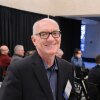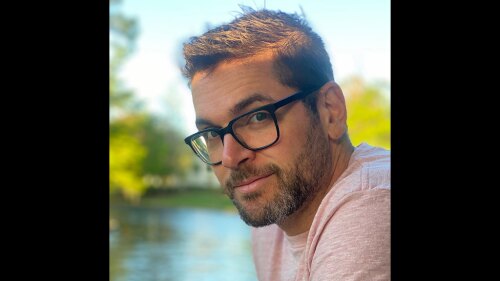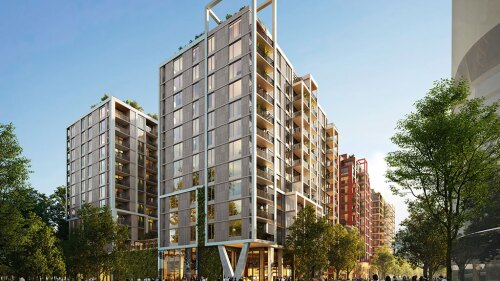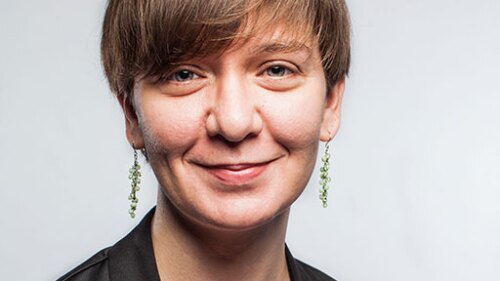Radical developers want to turn car-centric throughways into walkable neighborhoods.
America’s infrastructure is crumbling. And that’s a good thing—at least when it comes to freeways, say some developers. It would be better—both economically and in terms of quality of life—for communities that suffer from blight and division to demolish obtrusive throughways, expressways, and overpasses, according to a growing number of advocates of old-fashioned boulevards.
Perhaps the most famous example of this is the destruction of San Francisco’s Embarcadero Freeway—and it took an earthquake to make that happen. Originally designed to connect the Bay Bridge and the Golden Gate Bridge, the Embarcadero instead divorced the city from the waterfront for years. The 1989 Loma Prieta earthquake damaged it beyond repair, but the event did not worsen congestion; in fact, the local street grid absorbed traffic and the economy improved.
In 2002, the freeway became a palm-lined boulevard, designed by ROMA Design Group, with two banks of thoroughfare traffic and a streetcar line. The economic boost was dramatic, according to a Congress for the New Urbanism report: “Dense commercial development has lined the street, housing in the area has increased by 51 percent, and jobs have increased by 23 percent. High-profile redevelopments like the old Ferry Building and Pier 1 have continued to transform the waterfront. Similarly, the old industrial South Market area was redeveloped as a dense, mixed-use neighborhood.”
Alex Twining, president and CEO of Twining Properties and chair of ULI’s Urban Development Mixed-Use Council (Red), says the country is in the next phase of knitting back together the many neighborhoods that were ripped apart by the Interstate Highway System.
Manhattan won some of the first battles, actually stopping the development of highways, says Twining. “In the classic fight between Jane Jacobs and Robert Moses, neighborhoods succeeded in defeating Moses’s plan to build an east–west highway right through Greenwich Village. The city also battled to prevent the Westside Highway from extending to the tip of Manhattan. Today, the on-grade roadway that runs along the river works just fine without cloverleafs and flyovers.
“The next stage was in places like San Francisco and Boston where they were able to raise massive federal dollars to bury major highways, but even more exciting is the next wave in places like Cleveland and New Haven, where we are turning them back into city streets,” added Twining.
In Milwaukee, ULI Multifamily Gold Council chair and developer Barry Mandel is an outspoken advocate of removing the Park East Freeway. His East Point project, which won ULI’s Award for Excellence as Best Mixed-Use Development in 1999, demonstrates the wisdom of replacing freeways with boulevards, he says, because it was built on land originally designed to extend the Park East Freeway.
“The boulevard carries traffic better than the freeway, and frees up land for development and an increased tax base,” he says. “In terms of quality of life, it becomes much more pedestrian-friendly. The freeway is a psychological as well as a physical barrier. The boulevard is much more attractive, and transit-oriented developments are much better integrated with the fabric of the city, including residents and businesses.”
In Mount Pleasant, South Carolina, Johnnie Dodds Boulevard (U.S. Highway 17) is proposed to transition from a rural highway into a limited-access arterial with elevated overpasses. The area’s East Cooper Planning Council has instead proposed boulevards—with the scale and design of the classic, tree-shaded roadways in Brooklyn—that intersect with local streets through roundabouts, thus preserving the community’s existing character.
In Cleveland, Ohio, plans to transform the fast lanes of the West Shoreway into a tree-lined boulevard are moving forward. They include decreasing auto speeds, improving connections between neighborhoods and the lakefront, and adding bike trails.
Notoriously car-centric Los Angeles also has freeway iconoclasts. Developer Michael Dieden, principal of Creative Housing Associates, advocates demolishing the 10 Freeway running east–west in the city. He also organized a 2010 Railvolution conference panel in Portland, Oregon, which examined how to turn freeways into boulevards.
“Look at the positive impact that could come from demolishing the 10,” Dieden says. “It’s important in both symbolic and real socio-environmental ways. For one, the 10 has segregated L.A. for half a century, to the point where people say, ‘Oh, my God, you actually go south of the 10?’ Two, this freeway saps street vitality from the major arterials. Let’s reverse that by removing cars and starting from scratch with pedestrian-friendly principles, maybe even running a trolley down it. The arterials could become what Wilshire Boulevard was supposed to be: grand boulevards of Los Angeles.”
For a more recent top ten list of freeway teardowns, based on progress toward teardown as of September 2011, see “Top 10 Metro Highway Removal Projects.”
For a list of potential freeways for teardown, view A National List of Top Teardown Prospects on the website of the Congress for the New Urbanism.






